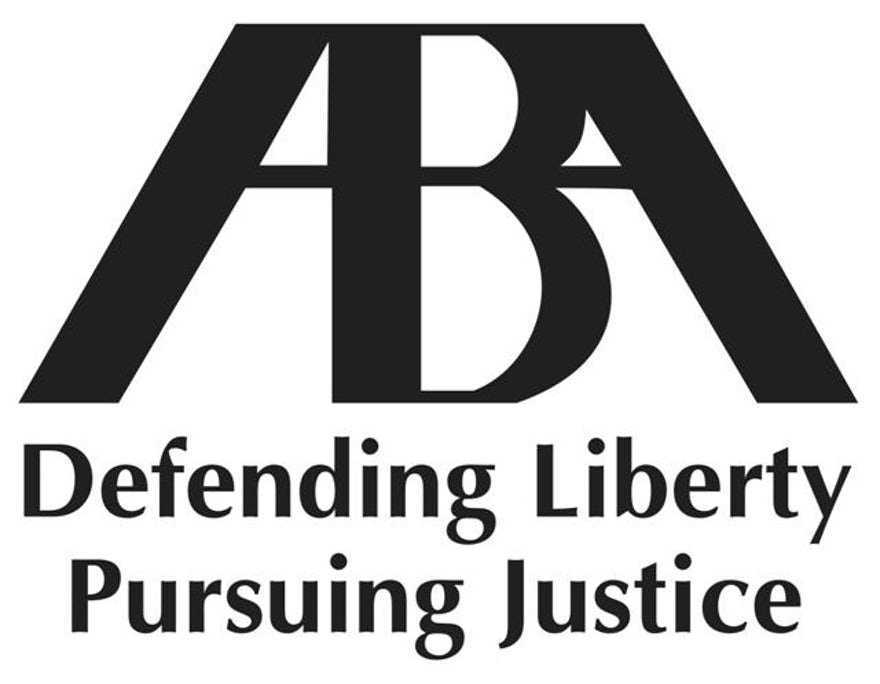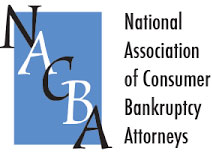What Does Filing Bankruptcy Do to Your Credit Score in 2023?
Financial setbacks happen, but what happens when the last resort of bankruptcy comes knocking? The question, “What does filing bankruptcy do to your credit score?” is crucial to consider. The ramifications of bankruptcy on one’s credit score can be severe, and understanding these implications is vital in the journey to rebuild one’s financial standing. This blog post aims to provide a comprehensive overview of the immediate impact of bankruptcy on credit scores, the different types of bankruptcy, and the duration of bankruptcy on credit reports. Furthermore, we’ll explore factors affecting credit score recovery, strategies for rebuilding credit, and bankruptcy alternatives with potentially lesser effects on credit scores. So buckle up and let’s navigate these choppy financial waters together, starting with understanding what filing bankruptcy does to your credit score.
Short Summary
- Filing for bankruptcy can have an immediate and significant negative impact on credit scores, but there are strategies to rebuild it.
- Bankruptcy filings remain on credit reports for 7-10 years, making it difficult to rebuild. Understanding contributing factors and establishing new credit, maintaining good financial habits & monitoring progress can help restore one’s score.
- Exploring alternatives such as debt consolidation or settlement may be a viable path with less effect on the score than bankruptcy.
The Immediate Impact of Bankruptcy on Your Credit Score

Filing bankruptcy is no walk in the park, as it leaves a significant negative impact on credit scores. The higher the FICO score, the more it will be affected by a bankruptcy filing. Credit scores may plummet, making it more difficult to secure loans, rent an apartment, or even obtain employment. Imagine being trapped in a vicious cycle of poor credit, unable to break free and rebuild your financial life.
But it’s not all doom and gloom. Despite the harsh reality of a poor credit score after filing for bankruptcy, there are strategies available to rebuild credit. These strategies include establishing new credit, maintaining sound financial practices, and tracking credit progress, which we will explore in detail later in this post.
Types of Bankruptcy and Their Effects on Credit Scores
Bankruptcy comes in two main flavors: Chapter 7 and Chapter 13. Although both types of bankruptcy aim to provide relief from overwhelming debt, they differ in their approaches and implications on credit scores. In Chapter 7 bankruptcy, most unsecured debts are eliminated, leaving creditors unable to recover what they advanced. On the other hand, Chapter 13 bankruptcy halts collection proceedings and formulates a plan for debtors to partially reimburse creditors over a definite timeframe. Both types of bankruptcy communicate to the public that the individual is a credit risk.
Establishing new credit, adhering to sound financial practices, and tracking credit progress are all viable strategies for rebuilding credit following either type of bankruptcy. Let’s dive deeper into the specifics of Chapter 7 and Chapter 13 bankruptcy.
Chapter 7 Bankruptcy
Chapter 7 bankruptcy, also known as liquidation bankruptcy, eliminates debt and can exempt certain assets. This type of bankruptcy can be a double-edged sword, as although it frees the individual from debt, it may result in the relinquishment of important assets. The legal order that releases an individual from debts covered by bankruptcy, called a discharge, is essential to rebuilding credit after Chapter 7 bankruptcy.
It is important to note that Chapter 7 bankruptcy should be considered a last resort due to its severe implications on credit scores and asset loss. However, as mentioned earlier, there are strategies available to rebuild credit after bankruptcy, which can provide a light at the end of the tunnel.
Chapter 13 Bankruptcy
Chapter 13 bankruptcy, in contrast to Chapter 7, reorganizes debts to make them more manageable. This form of bankruptcy involves a repayment plan that typically lasts between three and five years. Unlike Chapter 7 bankruptcy, Chapter 13 allows the debtor to retain their assets while repaying a portion of their debts over the specified timeframe.
Once the Chapter 13 bankruptcy repayment plan is completed, the bankruptcy will be released. Though the process may be lengthy, Chapter 13 bankruptcy can provide a more manageable approach to debt repayment and, with the right strategies, rebuilding credit after bankruptcy is achievable.
Duration of Bankruptcy on Credit Reports
Bankruptcy doesn’t just pack its bags and leave once debts are discharged. It lingers on credit reports for 7-10 years, making it difficult to escape its shadow. Bankruptcy filings are listed in the public records section of credit reports, and unfortunately, they cannot be removed. As the old saying goes, “Time heals all wounds” – even those inflicted by bankruptcy on credit reports.
Obtaining a final discharge is crucial to rebuilding credit right away after bankruptcy. The importance of a fresh start cannot be overstated, as it lays the foundation for rebuilding credit and emerging stronger from the financial setback. Regular review of credit reports to confirm their accuracy and staying informed about one’s credit score can aid in the process of credit recovery.
Factors Affecting Credit Score Recovery After Bankruptcy
Eager to rebuild your credit after bankruptcy? It’s essential to understand the factors that can affect credit score recovery. Factors such as income, debt-to-income ratio, and payment history all play a role in how quickly and efficiently your credit score can bounce back following bankruptcy. Additionally, the duration since the bankruptcy was submitted, setting up new credit, and paying bills punctually can influence credit score recuperation.
By keeping these factors in mind and diligently working towards improving them, you can bolster your credit score recovery after bankruptcy. It may not be an easy journey, but with perseverance and the right strategies, you can regain control of your financial life.
Strategies for Rebuilding Credit Following Bankruptcy
So you’ve weathered the storm of bankruptcy and are ready to rebuild your credit. But where do you begin? Establishing new credit, maintaining good financial habits, and monitoring credit progress are key strategies for rebuilding credit after bankruptcy. By focusing on these areas, you can set yourself on a path to financial recovery and improved creditworthiness.
Let’s delve deeper into these strategies and explore the specific steps you can take to rebuild your credit following bankruptcy.
Establishing New Credit
One of the first steps in rebuilding credit after bankruptcy is establishing new credit. Secured credit cards and credit-builder loans can be effective tools in this regard. Secured credit cards require a cash deposit as collateral and can help rebuild credit by reporting activity to the credit bureau. Credit-builder loans, which involve the lender depositing the funds into a savings account for the borrower, can provide an opportunity to make regular payments over time, improving credit score.
Before signing a credit builder loan contract, ensure that the lender submits payments to the credit bureaus. By utilizing these financial products and making timely payments, you can pave the way for better credit standing after bankruptcy.
Maintaining Good Financial Habits
Good financial habits are the backbone of rebuilding credit after bankruptcy. Timely bill payments and keeping a low credit utilization ratio (30% or less of your total credit limit) are crucial to demonstrating financial responsibility. Avoiding credit repair scams and practicing fiscal responsibility can also contribute to a better credit score.
Additionally, a reputable credit repair company can help by negotiating with creditors and credit bureaus on your behalf to eliminate negative marks and resolve any issues. It is important to be careful when selecting a credit repair company. Research their legitimacy thoroughly to avoid being taken advantage of.
Monitoring Credit Progress
Monitoring credit progress is vital in the journey to rebuild credit after bankruptcy. Regular review of credit reports, establishing credit monitoring services, and staying informed about your credit score can help you make informed decisions regarding your financial future. Knowledge is power, and being aware of your credit progress can empower you to take the necessary steps to improve your credit standing.
Moreover, examining alternatives such as debt consolidation, debt management plans, and debt settlement can also contribute to rebuilding credit after bankruptcy. By exploring these options and staying vigilant about your credit progress, you can take control of your financial destiny and rise above the challenges that bankruptcy presents.
Bankruptcy Alternatives and Their Effects on Credit Scores

Bankruptcy isn’t the only option when it comes to tackling overwhelming debt. Alternatives such as debt consolidation, debt management plan, and debt settlement may have less impact on credit scores and can provide a viable path to financial recovery. While each alternative has its pros and cons, exploring these options may prove to be a better fit for your unique financial situation.
Let’s take a closer look at these bankruptcy alternatives and how they can potentially help you regain control of your finances without the severe implications of bankruptcy on your credit score.
Debt Consolidation
Debt consolidation involves combining multiple debts into one loan with a lower interest rate, making it easier to manage debt. By consolidating debts, you can potentially reduce overall interest rates and streamline payments.
However, it may have a negative impact on your credit score in the short-term. Having a good or excellent credit score can enable you to qualify for a lower interest rate on the new loan, but it’s important to be aware of the potential risks associated with debt consolidation. Increased interest rates, extended repayment periods, and other fees can result in a greater overall debt amount if the loan is not paid back promptly.
Be sure to weigh the pros and cons of debt consolidation before proceeding with this alternative.
Debt Management Plan
A debt management plan is a payment arrangement administered by a credit counseling agency that allows individuals to pay off their debts over a period of three or five years. This plan can potentially reduce your monthly payments and interest rates, making the process more cost-effective. However, you will need to pay a small initial fee and a recurring monthly fee throughout the duration of your plan.
Debt management plans can be a viable option for managing debt, but it’s important to consider the fees involved and whether the plan aligns with your financial goals. As with any financial decision, it’s crucial to do your due diligence and research before committing to a debt management plan.
Debt Settlement
Debt settlement is a way of managing debt. It involves negotiating with creditors to pay off less than what is owed. While this option may sound appealing, it’s important to consider the potential risks and costs associated with debt settlement. Debt settlement companies usually charge fees both in the beginning and throughout the settlement process. This can significantly increase the total cost.
Furthermore, debt settlement can have an adverse effect on your credit report, but it is generally not as damaging as bankruptcy. Weighing the pros and cons of debt settlement is essential in determining whether this bankruptcy alternative is the right choice for your financial situation.
Summary
In conclusion, bankruptcy can have a significant impact on one’s credit score, making it imperative to understand the implications and strategies to rebuild credit after bankruptcy. By exploring different types of bankruptcy, the duration of bankruptcy on credit reports, and factors affecting credit score recovery, you can make informed decisions about your financial future. Furthermore, examining strategies for rebuilding credit, such as establishing new credit, maintaining good financial habits, and monitoring credit progress, can help you regain control of your financial life.
The journey to rebuild credit after bankruptcy may be challenging, but it’s not impossible. By exploring bankruptcy alternatives such as debt consolidation, debt management plans, and debt settlement, you can potentially find a more suitable path to financial recovery without the severe implications of bankruptcy on your credit score. Stay diligent, informed, and proactive in your efforts to rebuild your credit, and you’ll emerge stronger and more financially resilient than ever before.
Frequently Asked Questions
What is the downside of filing for bankruptcy?
Filing for bankruptcy has potential downsides, such as losing valuable assets, incurring damaging credit and being limited in loan opportunities in the future.
This important decision needs to be carefully considered and weighed against the positive effects of regaining control of your financial life, keeping property, and having collections calls stopped.
How long does bankruptcy ruin credit?
Bankruptcy can be detrimental to one’s credit and the effects can last for an extended period of time. Chapter 7 bankruptcy remains on a credit report for 10 years from the filing date, while a Chapter 13 bankruptcy will stay for seven years after being discharged or dismissed.
Therefore, bankruptcy can ruin your credit for up to 10 years.
Does bankruptcy wipe your credit score?
Unfortunately, bankruptcy does have a significant impact on your credit score. In fact, it can cause your score to plummet by hundreds of points depending on how high it was prior to filing. A good credit score of 700 or above could drop by as much as 200-240 points.
In short, filing for bankruptcy can significantly damage an individual’s credit score and stay on their credit reports for up to 10 years. The exact effect will depend on the individual’s credit score prior to filing.
How much is your credit score after bankruptcy?
Unfortunately, bankruptcy can cause your credit score to take a drastic hit, typically dropping 100 points or more immediately. The average credit score after filing is approximately 500-550, depending on your situation prior to filing for bankruptcy.
Therefore, it is important to understand the financial implications of filing.
What is the downside of filing for bankruptcy?
Filing for bankruptcy can be a difficult decision to make and comes with significant drawbacks. These include losing assets of value, damaging your credit score and making it harder to receive future loans.
Though there are benefits such as keeping some of your property and freeing yourself from debt collection calls, it should not be taken lightly.







